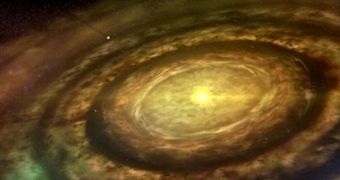Most chemicals heavier than hydrogen and helium, a group including iron and silicon, were until now believed to be absolutely necessary for the formation of planets. Scientists believe that new worlds could only develop around metal-rich stars. This was recently proven not to be the case.
This is especially true for Earth-like planets. These small worlds were found to be perfectly capable of developing around metal-poor stars as well, cosmic bodies that do not feature high amounts of heavier chemical elements.
Experts reached these conclusions after they had studied data collected by ground-based observatories, and combined the information with the results of research conducted using NASA's Kepler Telescope. The latter was developed specifically for hunting down extrasolar planets.
What the new investigation managed to demonstrate is that rocky worlds can appear around varied types of stars, which means that they could be more widespread throughout the Universe than originally calculated.
The new study was led by astrophysicist Lars A. Buchhave, who is based at the Niels Bohr Institute and the Center for Star and Planet Formation, both at the University of Copenhagen. The expert and his team analyzed 150 stars and 225 planetary candidates for this research.
“I wanted to investigate whether small planets needed a special environment in order to form, like the giant gas planets, which we know preferentially develop in environments with a high content of heavy elements,” the expert says.
“This study shows that small planets do not discriminate and form around stars with a wide range of heavy metal content, including stars with only 25 percent of the Sun's metallicity,” he goes on to say.
It's important to note here that planets form from accretion disks, circular gas and dust accumulations that are left behind after a molecular cloud collapses under the pull of its own gravity. The latter results in extreme friction and heat, and the formation of a new protostar.
However, not all material in the original cloud is included in the star. What remains is used to make planets, asteroids, comets, and everything else in a star system. Previously, scientists thought that stars needed iron, oxygen, silicon and magnesium in abundance to create Earth-like worlds.
“Does nature require special environments to form Earth-size planets? The data suggest that small planets may form around stars with a wide range of metallicities – that nature is opportunistic and prolific, finding pathways we might otherwise have thought difficult,” Natalie Batalha says.
She holds an appointment as a Kepler mission scientist at the NASA Ames Research Center (ARC), in Moffett Field, California.

 14 DAY TRIAL //
14 DAY TRIAL //